Abstract
Cardiopulmonary function has been studied at rest and during graded exercise in 11 patients with systemic sclerosis. All patients had multi-system disease, five complained of breathlessness, and four had radiographic evidence of pulmonary fibrosis. All patients had gross effort intolerance. Lung volumes were reduced in half the patients, as was the transfer factor for CO when corrected for lung volume. Airway resistance was normal. Four patients hyperventilated on exercise, but the tidal volume was normal; three developed arterial desaturation during exercise. Six patients had an excessive elevation of blood lactate on exercise and three of these had evidence of muscle disease. Analysis of the exercise data suggested that in seven patients cardiac output and dead space were normal. In four patients there was a pattern of normal cardiac output, increased dead space, and increased venous admixture, suggesting ventilation/perfusion imbalance. There was no correlation between the results of the physiological tests and the extent of clinical involvement with the disease. The possible reasons for this and for the effort intolerance are reviewed.
Full text
PDF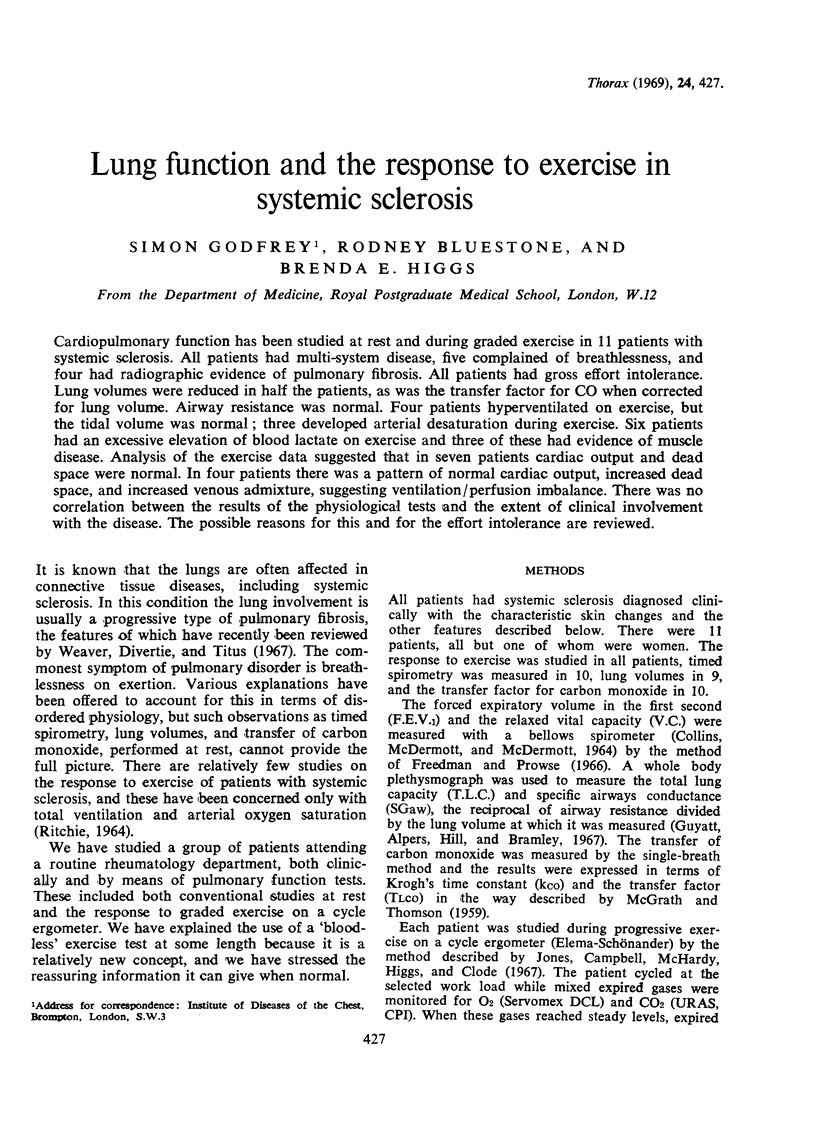
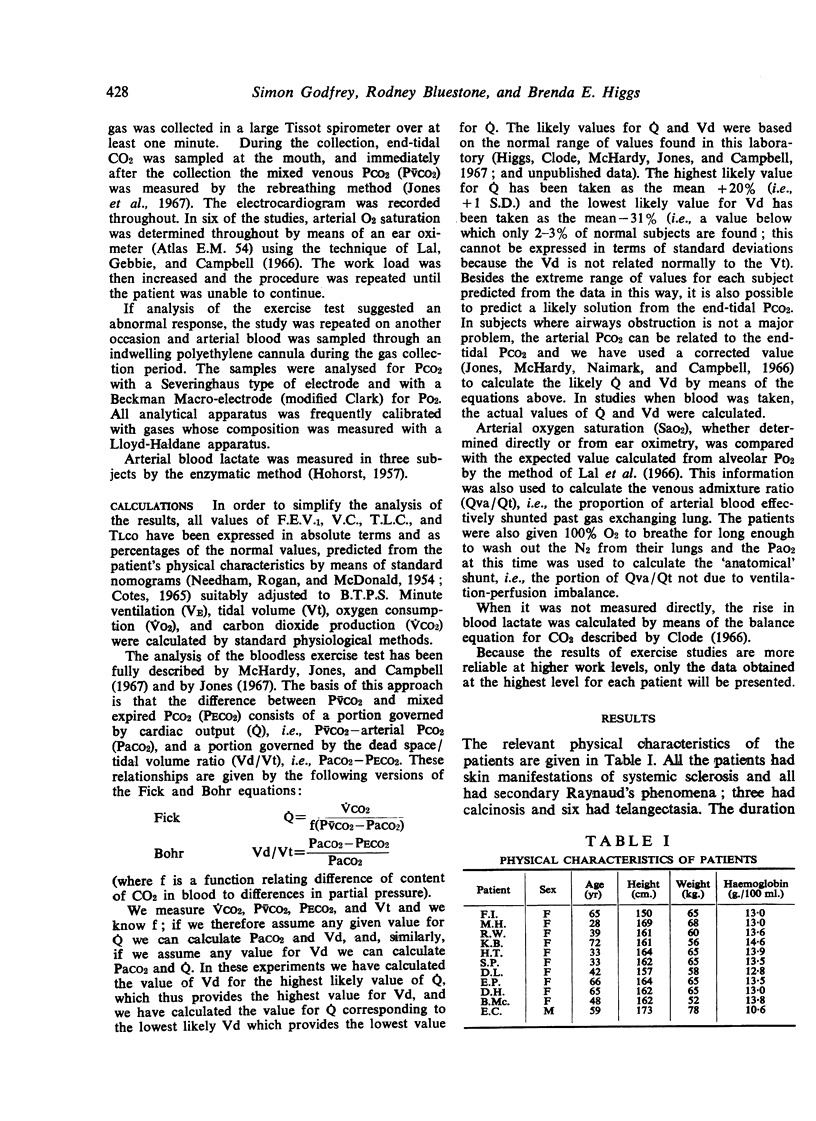
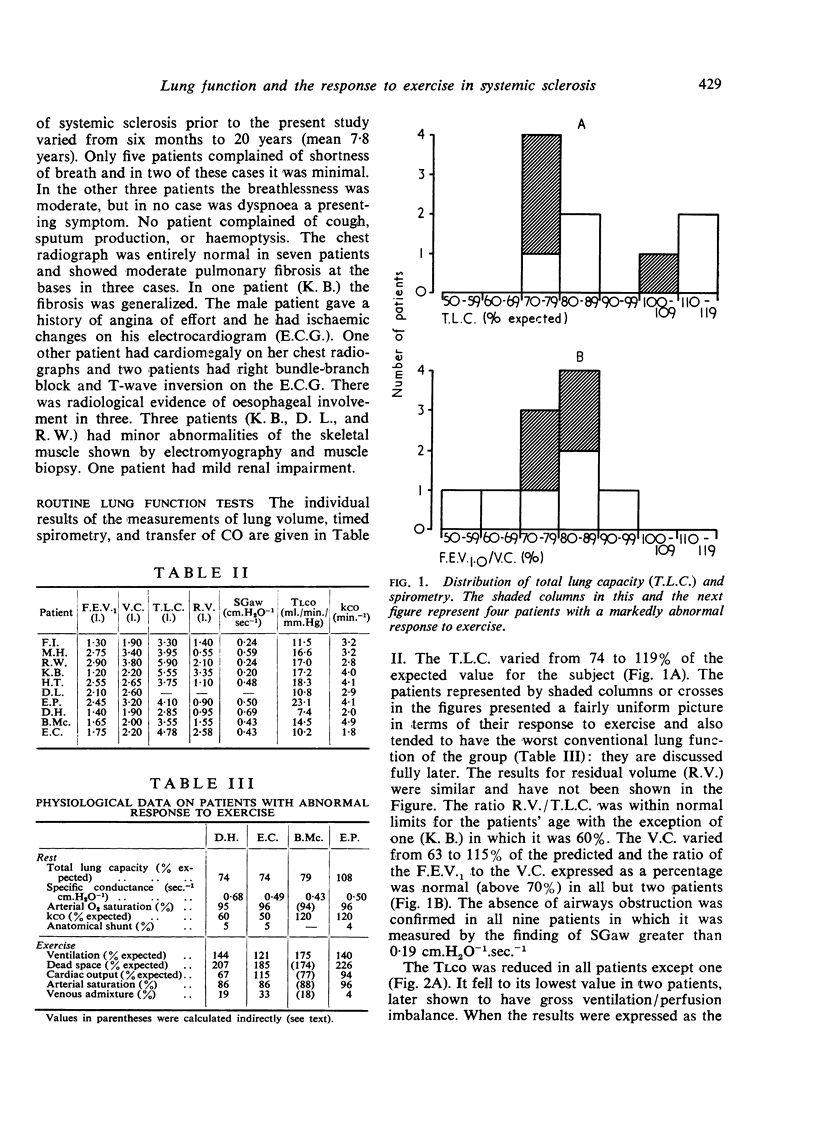

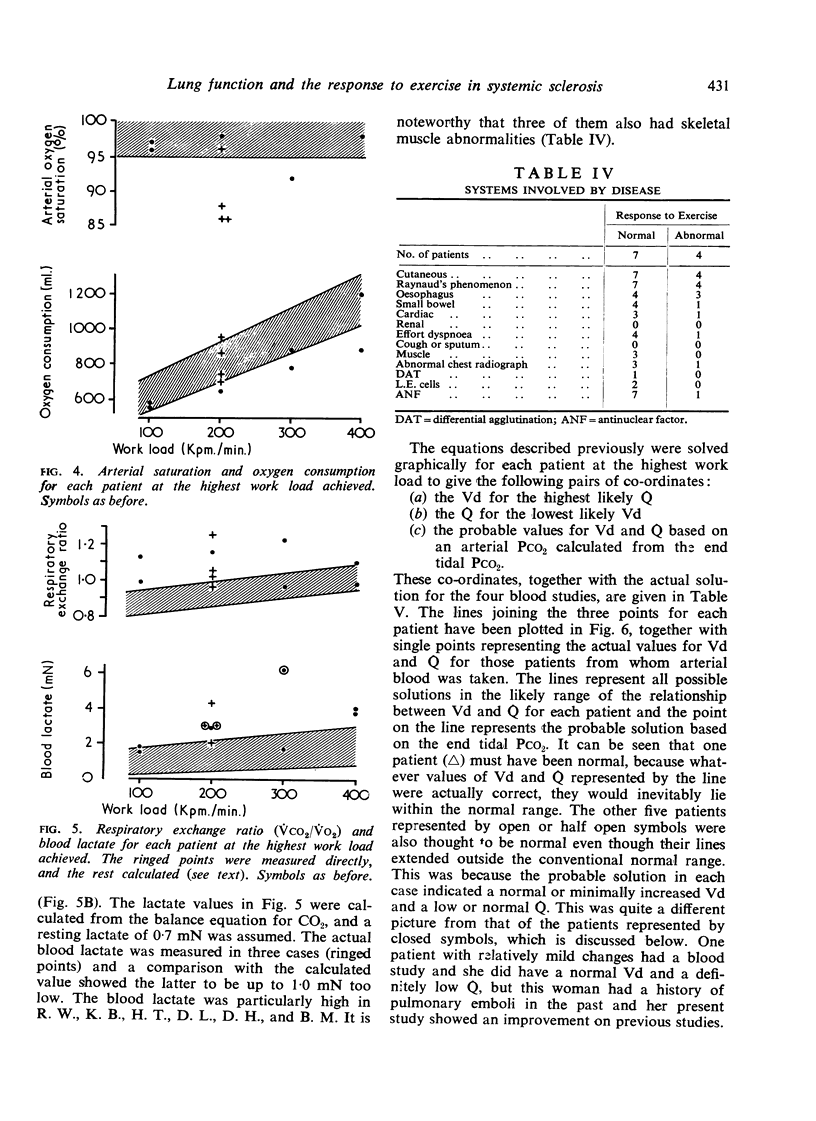
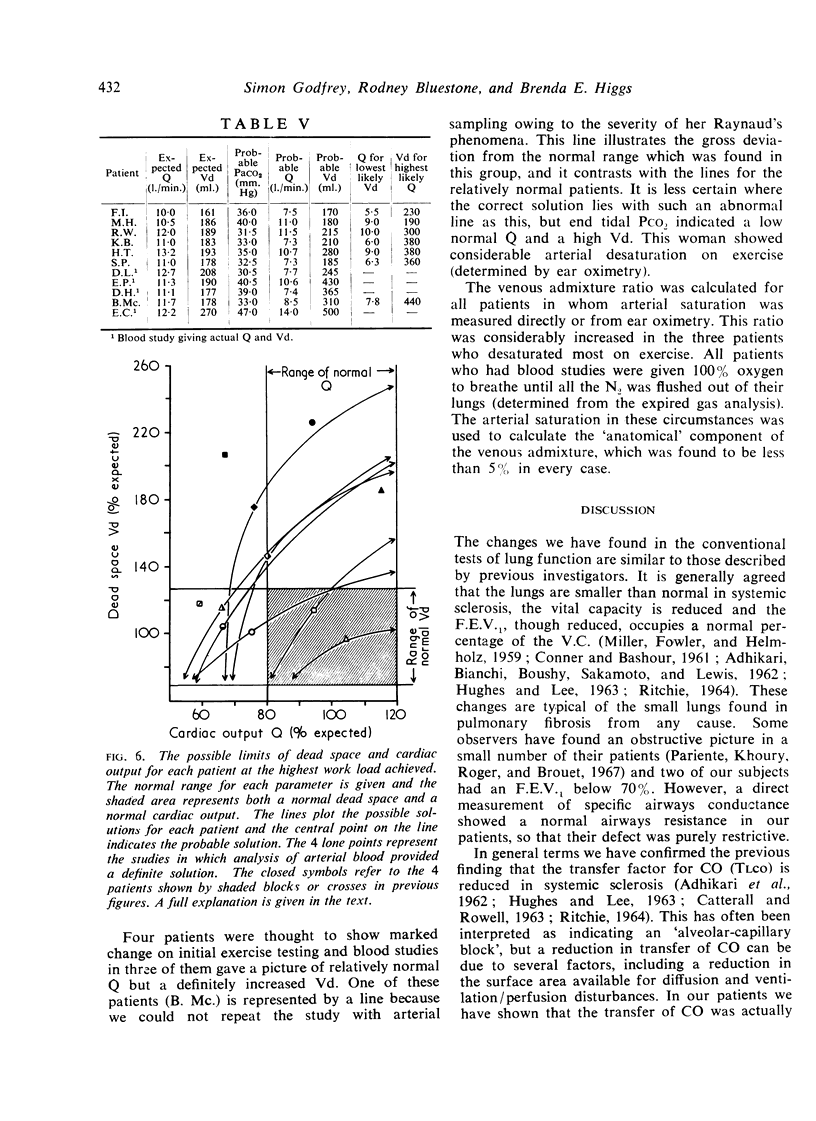
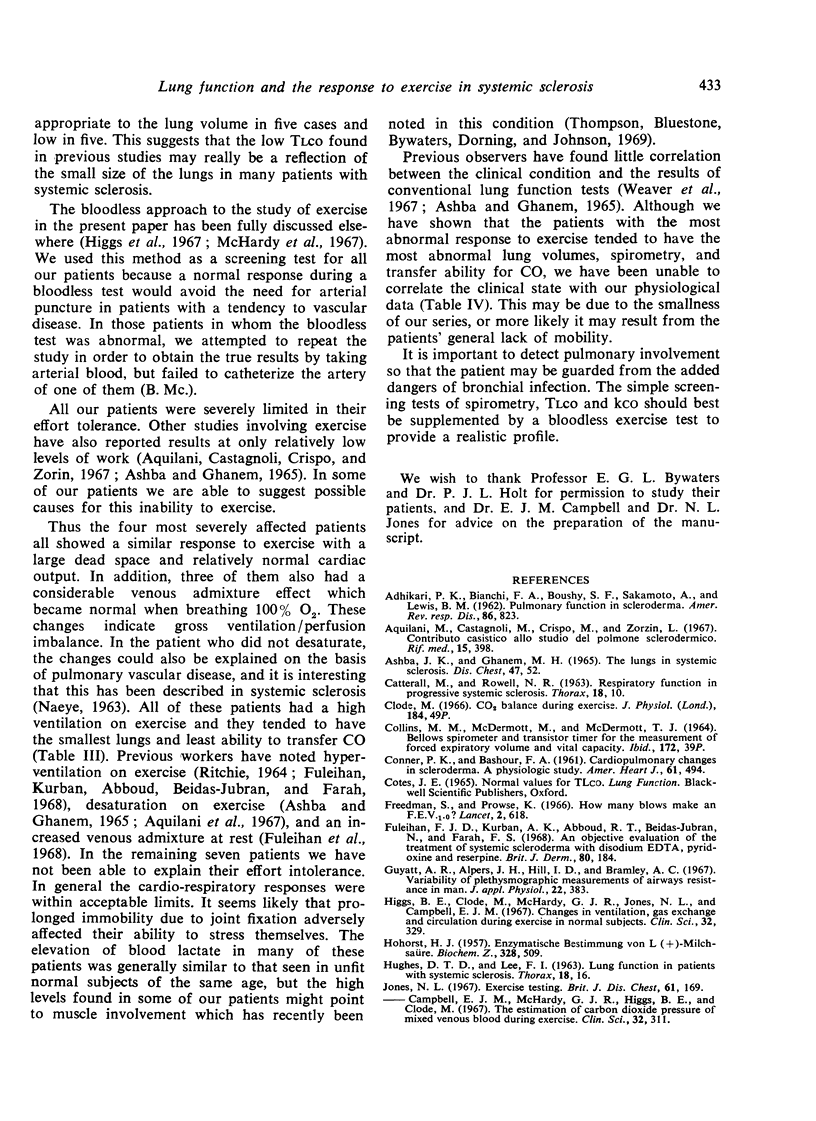
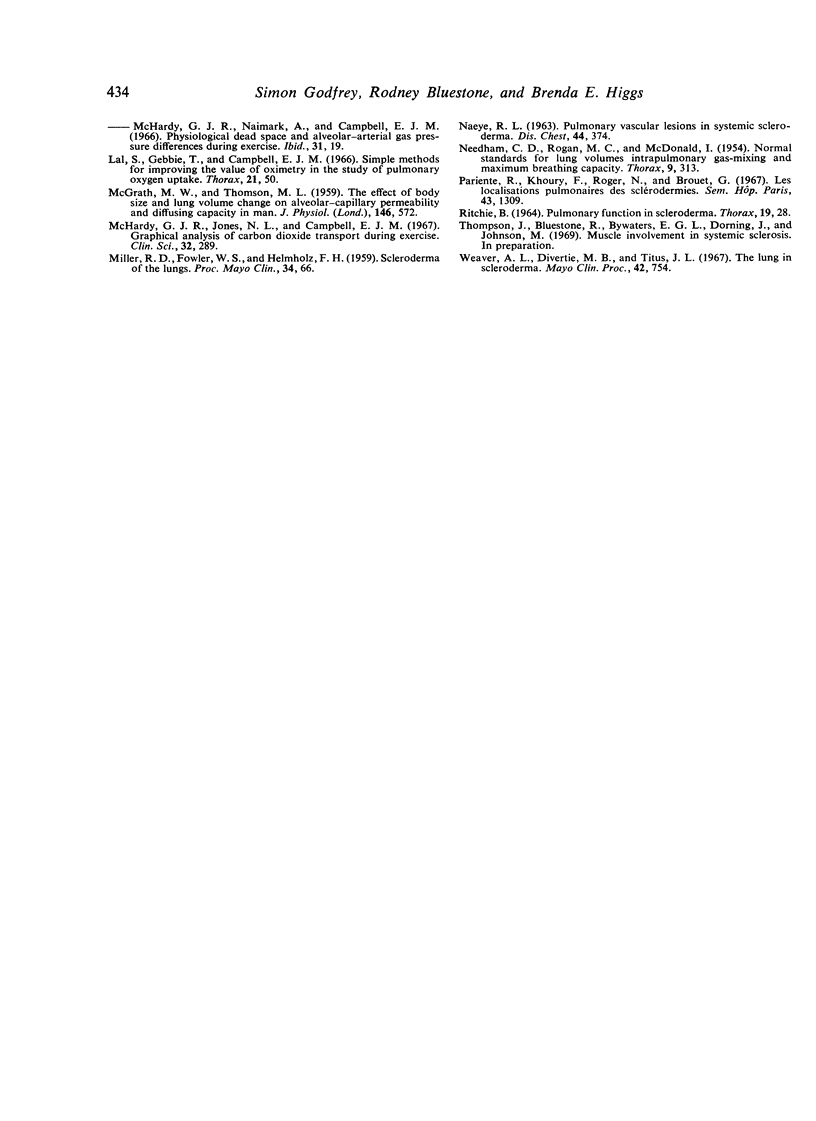
Selected References
These references are in PubMed. This may not be the complete list of references from this article.
- ADHIKARI P. K., BIANCHI F. A., BOUSHY S. F., SAKAMOTO A., LEWIS B. M. Pulmonary function in scleroderma. Its relation to changes in the chest roentgenogram and in the skin of the thorax. Am Rev Respir Dis. 1962 Dec;86:823–831. doi: 10.1164/arrd.1962.86.6.823. [DOI] [PubMed] [Google Scholar]
- ASHBA J. K., GHANEM M. H. THE LUNGS IN SYSTEMIC SCLEROSIS. Dis Chest. 1965 Jan;47:52–64. doi: 10.1378/chest.47.1.52. [DOI] [PubMed] [Google Scholar]
- CATTERALL M., ROWELL N. R. Respiratory function in progressive systemic sclerosis. Thorax. 1963 Mar;18:10–15. doi: 10.1136/thx.18.1.10. [DOI] [PMC free article] [PubMed] [Google Scholar]
- CONNER P. K., BASHOUR F. A. Cardiopulmonary changes in scleroderma. A physiologic study. Am Heart J. 1961 Apr;61:494–499. doi: 10.1016/0002-8703(61)90548-8. [DOI] [PubMed] [Google Scholar]
- Freedman S., Prowse K. How many blows make an F.E.V.1.0? Lancet. 1966 Sep 17;2(7464):618–619. doi: 10.1016/s0140-6736(66)91928-3. [DOI] [PubMed] [Google Scholar]
- Fuleihan F. J., Kurban A. K., Abboud R. T., Beidas-Jubran N., Farah F. S. An objective evaluation of the treatment of systemic scleroderma with disodium EDTA, pyridoxine and reserpine. Br J Dermatol. 1968 Mar;80(3):184–189. doi: 10.1111/j.1365-2133.1968.tb12290.x. [DOI] [PubMed] [Google Scholar]
- Guyatt A. R., Alpers J. H., Hill I. D., Bramley A. C. Variability of plethysmographic measurements of airways resistance in man. J Appl Physiol. 1967 Feb;22(2):383–389. doi: 10.1152/jappl.1967.22.2.383. [DOI] [PubMed] [Google Scholar]
- HOHORST H. J. Enzymatische Bestimmung von L(+)-Milchsäure. Biochem Z. 1957;328(7):509–521. [PubMed] [Google Scholar]
- HUGHES D. T., LEE F. I. Lung function in patients with systemic sclerosis. Thorax. 1963 Mar;18:16–20. doi: 10.1136/thx.18.1.16. [DOI] [PMC free article] [PubMed] [Google Scholar]
- Higgs B. E., Clode M., McHardy G. J., Jones N. L., Campbell E. J. Changes in ventilation, gas exchange and circulation during exercise in normal subjects. Clin Sci. 1967 Apr;32(2):329–337. [PubMed] [Google Scholar]
- Jones N. L., Campbell E. J., McHardy G. J., Higgs B. E., Clode M. The estimation of carbon dioxide pressure of mixed venous blood during exercise. Clin Sci. 1967 Apr;32(2):311–327. [PubMed] [Google Scholar]
- Jones N. L., McHardy G. J., Naimark A., Campbell E. J. Physiological dead space and alveolar-arterial gas pressure differences during exercise. Clin Sci. 1966 Aug;31(1):19–29. [PubMed] [Google Scholar]
- Krnjević K., Randić M., Straughan D. W. Nature of a cortical inhibitory process. J Physiol. 1966 May;184(1):49–77. doi: 10.1113/jphysiol.1966.sp007903. [DOI] [PMC free article] [PubMed] [Google Scholar]
- Lal S., Gebbie T., Campbell E. J. Simple methods for improving the value of oximetry in the study of pulmonary oxygen uptake. Thorax. 1966 Jan;21(1):50–56. doi: 10.1136/thx.21.1.50. [DOI] [PMC free article] [PubMed] [Google Scholar]
- MILLER R. D., FOWLER W. S., HELMHOLZ F. H., Jr Scleroderma of the lungs. Proc Staff Meet Mayo Clin. 1959 Feb 4;34(A):66–75. [PubMed] [Google Scholar]
- McGRATH M. W., THOMSON M. L. The effect of age, body size and lung volume change on alveolar-capillary permeability and diffusing capacity in man. J Physiol. 1959 Jun 11;146(3):572–582. doi: 10.1113/jphysiol.1959.sp006212. [DOI] [PMC free article] [PubMed] [Google Scholar]
- McHardy G. J., Jones N. L., Campbell E. J. Graphical analysis of carbon dioxide transport during exercise. Clin Sci. 1967 Apr;32(2):289–298. [PubMed] [Google Scholar]
- NAEYE R. L. PULMONARY VASCULAR LESIONS IN SYSTEMIC SCLERODERMA. Dis Chest. 1963 Oct;44:374–379. doi: 10.1378/chest.44.4.374. [DOI] [PubMed] [Google Scholar]
- NEEDHAM C. D., ROGAN M. C., McDONALD I. Normal standards for lung volumes, intrapulmonary gas-mixing, and maximum breathing capacity. Thorax. 1954 Dec;9(4):313–325. doi: 10.1136/thx.9.4.313. [DOI] [PMC free article] [PubMed] [Google Scholar]
- Pariente R., Khoury F., Roger N., Brouet G. Les localisations pulmonaires des sclérodermies. Sem Hop. 1967 Apr 26;43(20):1309–1311. [PubMed] [Google Scholar]
- RITCHIE B. PULMONARY FUNCTION IN SCLERODERMA. Thorax. 1964 Jan;19:28–36. doi: 10.1136/thx.19.1.28. [DOI] [PMC free article] [PubMed] [Google Scholar]
- Weaver A. L., Divertie M. B., Titus J. L. The lung scleroderma. Mayo Clin Proc. 1967 Nov;42(11):754–766. [PubMed] [Google Scholar]


